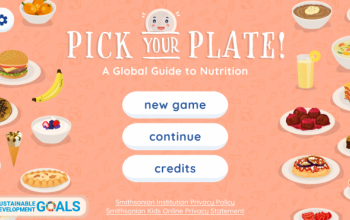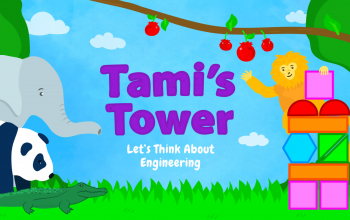STCMS™: Weather and Climate Systems
What is the temperature outside? Is it raining now, or will it rain today? Why does one city struggle with droughts while another suffers from annual floods? Every day we plan our lives around weather and climate systems—what is happening and what is going to happen. The Smithsonian Science Education Center presents Weather and Climate Systems, an STCMS™ curriculum unit designed to align to the Next Generation Science Standards. Science and engineering practices, teachable core ideas, and crosscutting concepts are integrated in every lesson. Join us as we gather evidence and make predictions about weather and climate on Earth!
You can find all Blackline Masters here. For teacher Lesson Masters and unit Written Assessments, go to Carolina Science Online.
Lesson 1: Pre- Assessment: Weather and Climate Systems
Science
Ask students to locate 2-3 sources for obtaining local weather news. How do these sources compare? Is the information on them consistent?
NGSS: (Supports MS-ESS2-5)
Common Core: RST.6-8.9
Lesson 2: Warming Earth's Surface
Science
Ask students to analyze the information about greenhouse gases found on the EPA website and answer the following question in their notebook: What connections to the various greenhouse gasses can students make with their day-to-day lives? You may ask students to identify 3-5 words they are unfamiliar with and ask them to find definitions (for instance, "biomass").
NGSS: (Supports MS-ESS3-3)
CC: RST.6-8.7
Lesson 3: The Water Cycle, Cloud Formation, and Air Masses
Language Arts
Divide the class into four groups and and assign one of the four readings to each group. You may want to pair readers, as some of the readings may be challenging for students. This is intentional in getting students to be comfortable with technical texts online. Alternately, this could be used for more advanced students looking for a challenge.
Students should take careful notes (including noticing words they are unfamiliar with and looking up definitions) about the reading that revolve around the following question: In each of the articles, you read about how water and the water cycle impact human experiences. Briefly summaries how humans are impacted by the water cycle according to the article you read. After hearing about everyone's articles, what are some common themes and patterns you can identify?
2) Ice Loss in Glacier National Park
3) Snowpack in the Sierra Nevada Mountains
4) In a Warming World, Storms May Be Fewer but Stronger
NGSS: (Supports MS.ESS2-4)
CC:RST.6-8.5
Lesson 4: Wind and Air Pressure
Science
Use the database on NOAA to find information about your local area. Ask students to help locate important information such as the temperature, the pressure, and the windspeed. Once the information is located and understood by students, challenge them to use this information film five-day weather forecasts in their lab groups.
NGSS: (Supports MS.ESS2-5)
CC: RST.6-8.9
Lesson 5: Ocean Currents
Science
PBS Learning Media has wonderful, free videos to help students understand the connection between oceans and the weather. Take a look at Great Ocean Conveyor Belt: Part 1 and Ocean Temperatures and Climate Patterns
NGSS: MS-ESS2-6
CCSS: RST.6-8.9
Lesson 6: Storms
Science
Students can use tablets or computers to play the game Disaster Detector to learn how communities use weather data to inform investments in infrastructure in cities and towns.
NGSS: (Supports MS-ESS2-5)
CCSS: None
Lesson 7: Predicting Weather
History of Technology
Work with your school library or media specialist to allow students to identify resources to construct a timeline of the history of weather forecasting. How have people predicted weather in the past? What new advances allow our predictions to be more accurate? What technologies are around the corner?
NGSS: MS-ETS1-4
CCSS: W.6.10
Lesson 8: Tracking Severe Storms
Career
Students who show an interest in learning about the science behind weather might be curious about weather-related careers. You could direct students to this clip about a Hurricane Researcher or Meteorologist
Lesson 9: Introduction to Climate
Science
What is the difference between weather and climate? This is an idea that is difficult for many adults to grasp! There are a few resources we can recommend to help your students understand this important distinction:
Watch a video from the University of Wisconsin-Madison here
Lesson 10: Climate Change Research
Science
Lead a class discussion to generate the following evidence: What sort of evidence is required to support the claim that humans are causing global climate change? What sort of evidence would bring that claim into question. Facilitate a discussion that leads to consensus among students. As students to explore the data found on NOAA's website on climate . According to information found on that website, ask students to look back on the types of consensus evidence they identified in the discussion. Does their evidence support or refute the claim? In groups, have students create a list of human activities that are suspected to influence climate change. From that list, have student groups choose one of those activities and design a method for monitoring and minimizing the impact of the selected activity.
NGSS: (Supports MS-ESS3-4)
CCSS: SL.6-8.4
Lesson 11: Impact of Climate Change
Science
One consequence of global climate change is the interruption of thermohaline circulation (also known as the global conveyor belt). Challenge students to look up what this term means and provide their own brief explanation as to why global climate change threatens the global conveyor belt.
NGSS: MS-ESS3-4
CCSS: W.6-8.6
Lesson 12: Assessment: Weather and Climate Systems
Lifelong Learning
Let students know that weather and climate data comes from multiple sources, and it is always at their fingertips. The NOAA Data Access portal provides access to data from weather balloons, radar, satellites and more!
Lesson 1: Pre- Assessment: Weather and Climate Systems
Watch the Worlds Weather in Real Time: Live interactive 3D map lets you watch rain, clouds and even hurricanes across the globe.
This interactive allows you to watch how weather looks across the globe
Lesson 2: Warming Earth's Surface
Uneven Heating of the Earth's Surface
This short video will give you a quick explanation of how the sun heats the earth
Lesson 3: The Water Cycle, Cloud Formation, and Air Masses
Clouds and How They Form
Lesson 4: Wind and Air Pressure
National Weather Service: Air Pressure
Learn more about what air pressure is and its relationship to weather.
Lesson 5: Ocean Currents
Current, Waves, and Tides: The Ocean in Motion
Find out more details about how currents move and work.
Lesson 6: Storms
Severe Weather 101
Lesson 7: Predicting Weather
How to read 'Surface' weather maps
Get a deeper understanding on how to read weather maps.
Lesson 8: Tracking Severe Storms
National Hurricane Center
Look at real-time data on hurricanes around the world
Lesson 9: Introduction to Climate
NSTA Interactive: National Climate Zones
See the many different climate zones around the world
Lesson 10: Climate Change Research
Climate Change: How do we know?
See data scientists are using to make conclusions about climate change
Lesson 11: Impact of Climate Change
USGCRP report, Global Climate Change Impacts in the United States (2014)
Read the full report here.
Intergovernmental Panel on Climate Change Regional Climate Projections
Read about regional climate projection.
Model Simulation of Past, Present and Future Climate Change
Lesson 12: Assessment: Weather and Climate Systems





Kit Tips & Tricks